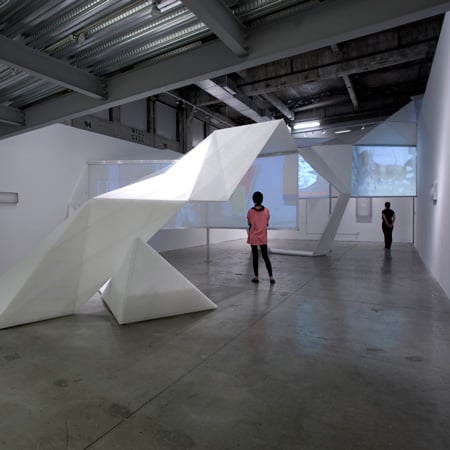
Blow x Blow by Deegan Day Design
Los Angeles designers Deegan Day Design have created an angular installation framing two dual-projection screens at the SCI-Arc gallery in Los Angeles.
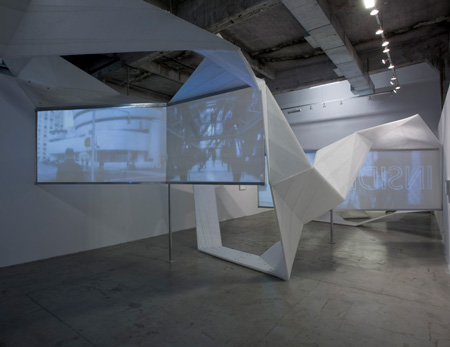
Called Blow x Blow, the installation will host an exhibition about prisons and museums, as well as exhibiting work by artists exploring new media and hosting a series of talks.
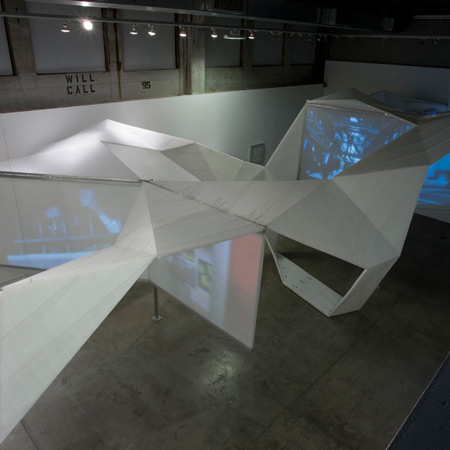
The space is divided by two surfaces, folded around to frame and become the screens.
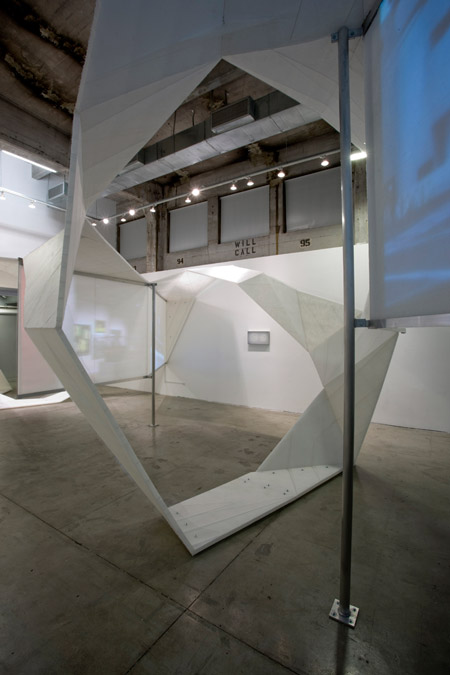
The angled geometries were created by digitally bouncing a single vector line around a grid-frame with the dimensions of the gallery space.
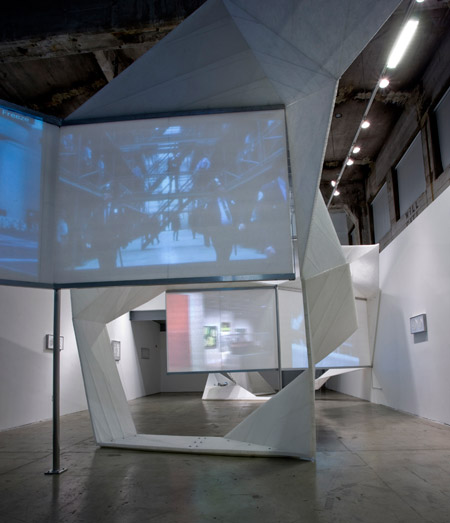
The exhibition will run until the 13th December 2009 with changing visual media throughout and public discussions with artists, architects and critics.
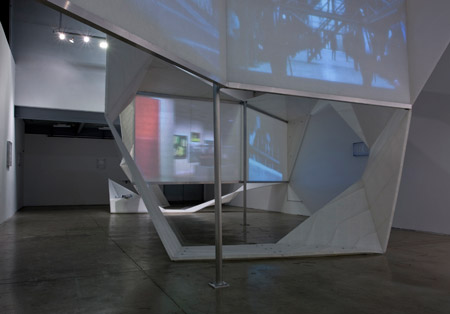
Photographs are by Joshua White.
Here's some text from the designers
--
Within and without Architecture?
Blow x Blow stages a bout between two trends in exhibition: the claiming of gallery space by architects, and the ceding of that space to the ambient possibilities of new media.
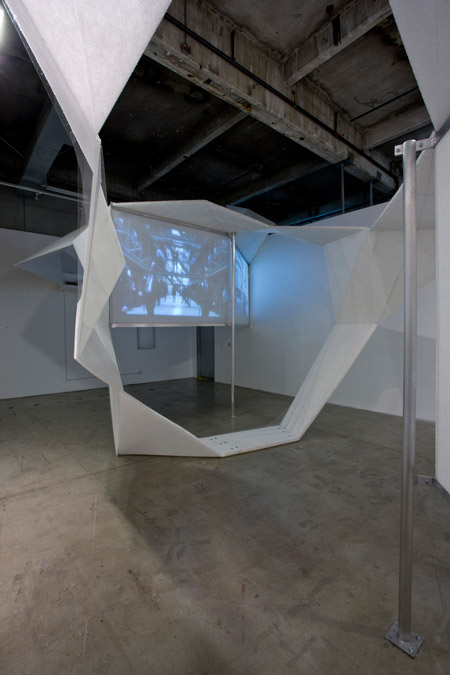
To chart this collision, techniques of cinematic projection and scripting are repurposed to spur new orders of spatial and structural sequencing, and new environments for communing with new art.
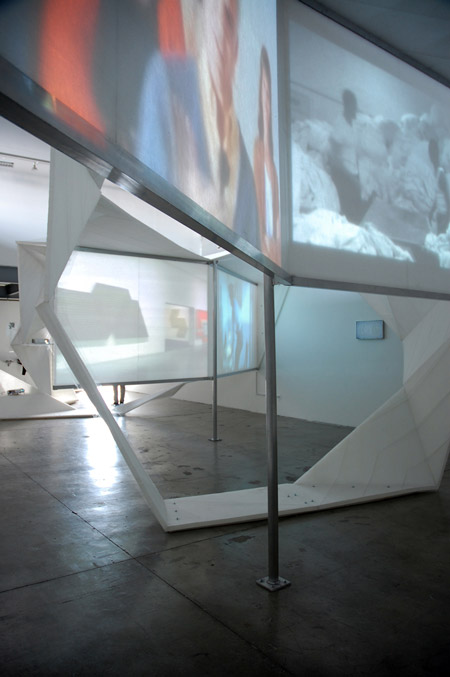
The installation derives first from the filmic, rather than architectural, relationship between script and projection - the former usually serving as the template or pretext for filmmaking, and the latter its (increasingly historical) mode of delivery and final fruition.
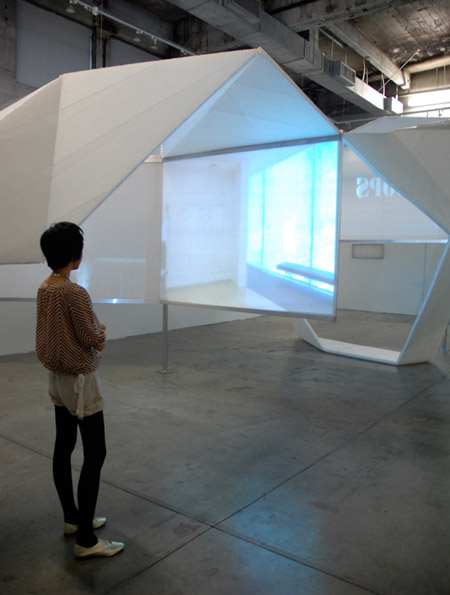
Projection precedes script in our equation, with the parameters of the projected image ‘cast’ in roles of formal generation.
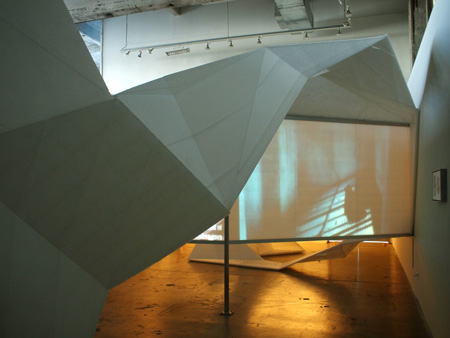
‘Bounce-line’ scripting, in which a single projection-based vector is allowed to rebound ad infinitum through the space of the gallery, evolved in two more disciplined directions.
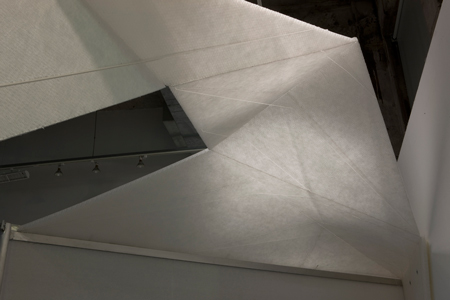
First, the space of the gallery was reconceived as a 6’x7’x8’ gridded frame, the proportions of which allow a 4:3 televisual image on one face, and a 9:16 cinematic aspect ration on the diagonal.
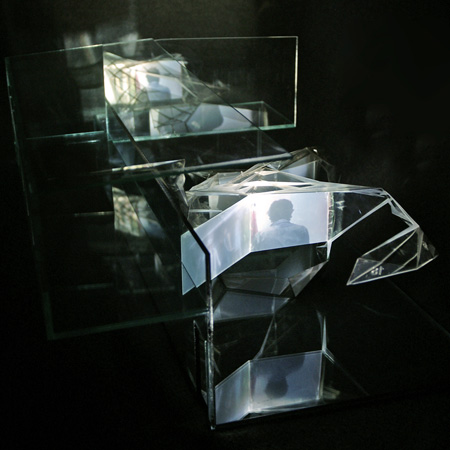
These dimensions also mimic those of a prison cell.
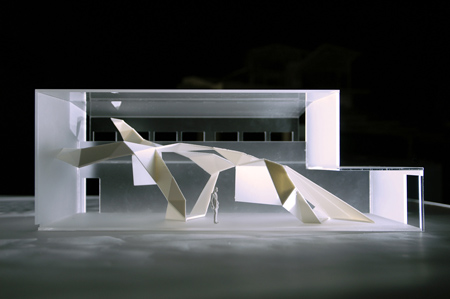
Within this matrix, a randomized 16-part vector path was developed in which each third vector point was triangulated back to its origin to create a continuous, faceted surface.
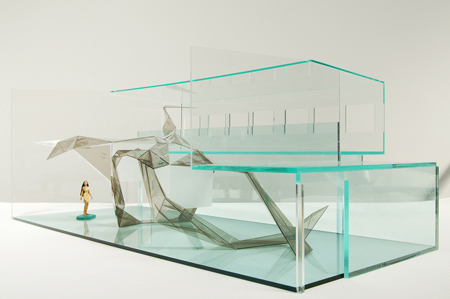
A ‘braid’ of two of these paths supports two dual-screen projection areas.
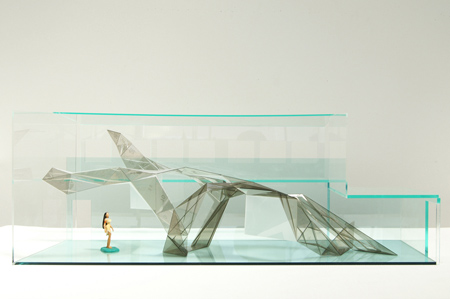
Rather than simply blacking out the gallery, the spanning surfaces of the vectorpaths create a ‘grey room’ condition in which viewers may see each other, but projected images are shaded from clerestory exposure.
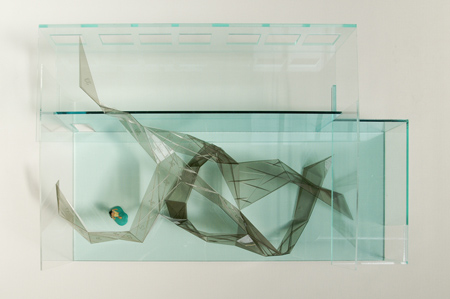
The title Blow x Blow alludes to a few ‘blown’ opportunities, including Antonini’s Blow Up (1966), Gordon Matta-Clark’s Blow Out of 1976, and George Yu’s earlier pneumatic installation in the SCI-Arc Gallery, also titled Blow Up.
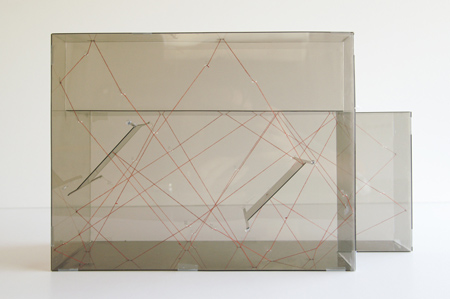
The choreography of freedom and constraint in the design of Blow x Blow also keys to its inaugural programming, ‘Collections+Corrections’: Architectures for Art and Crime, a study of prisons, museums and their complementary roles in contemporary high design and US urban renewal.
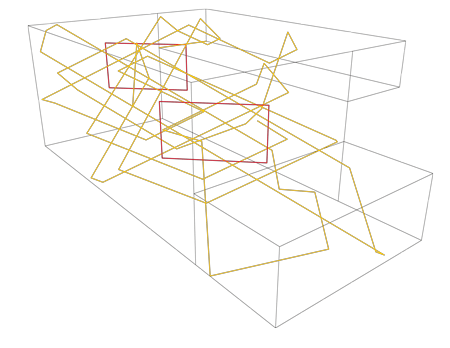
Click for larger image
Duration in exhibition, like sentencing in incarceration, is a variable we hope to test.
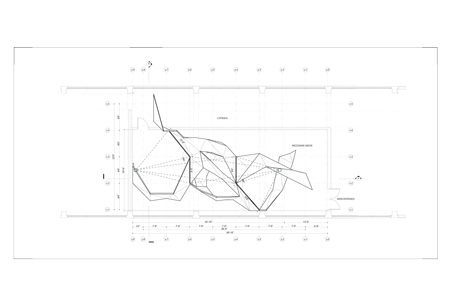
Click for larger image
After a two week-run of ‘Collections+Corrections’, the installation will host work by leading artists working in new media in a series entitled ‘Friends of Friends’.
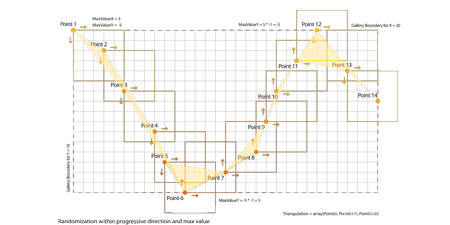
Click for larger image